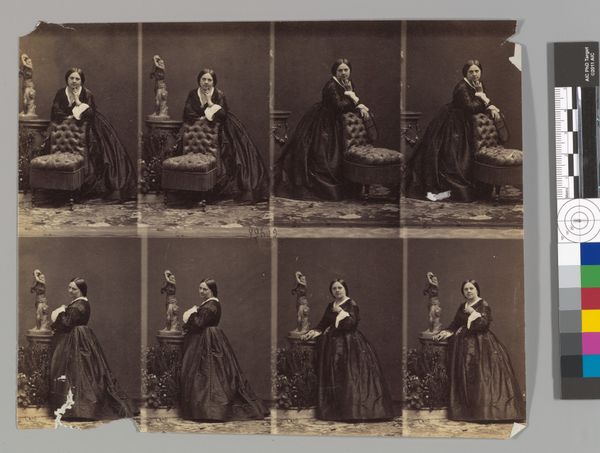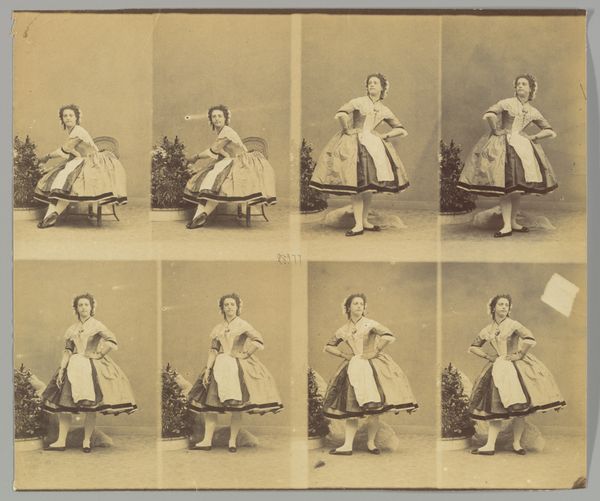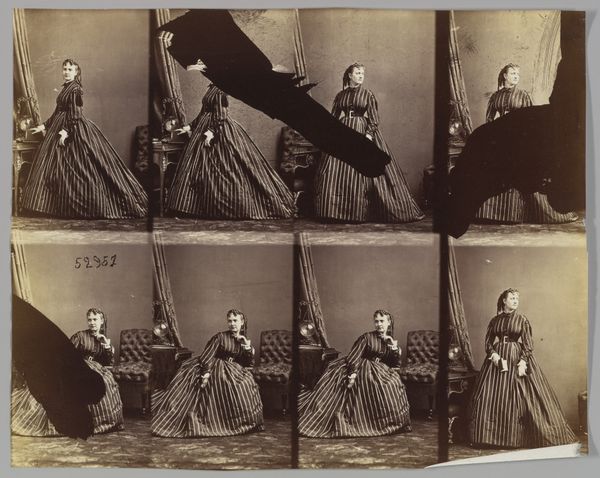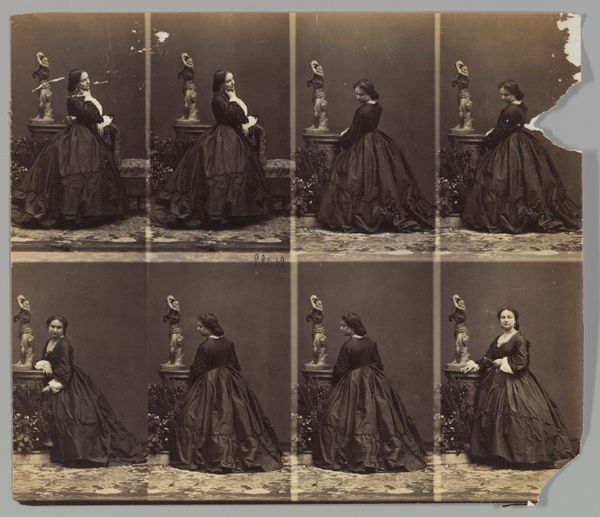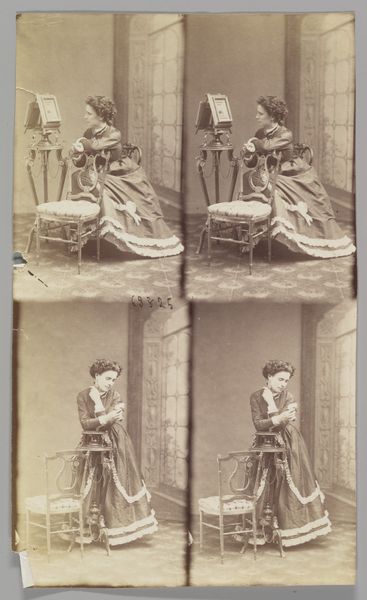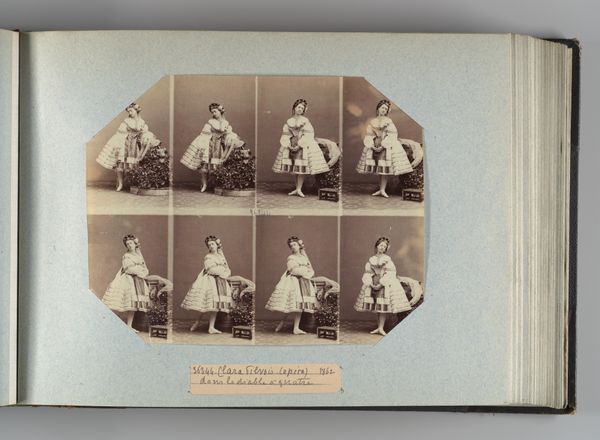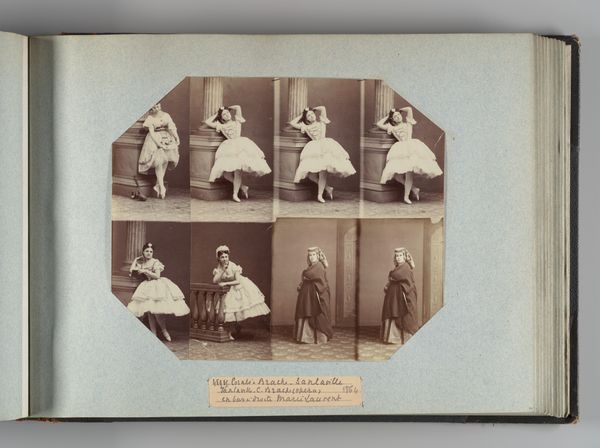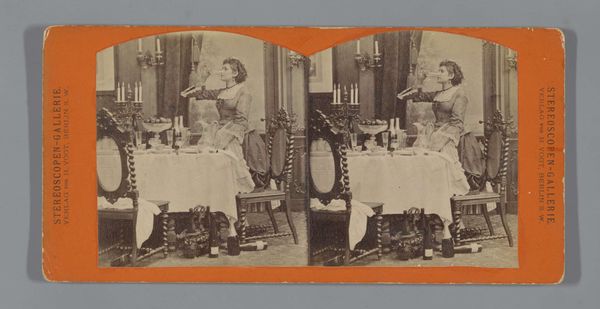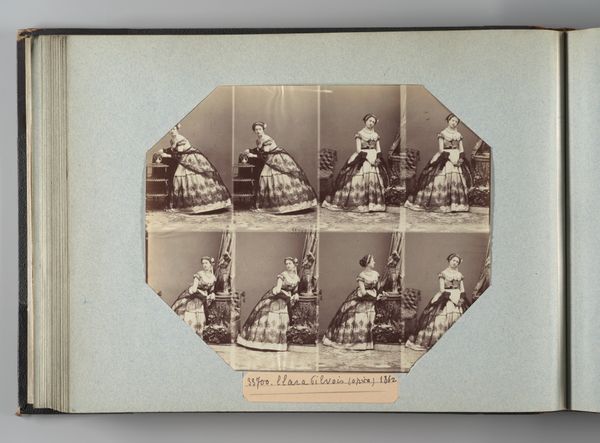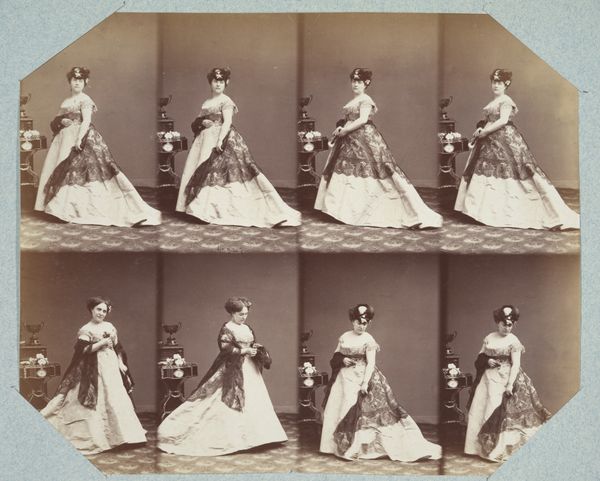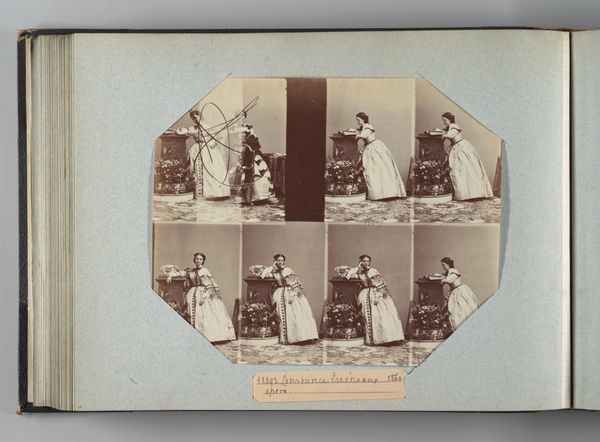
photography, albumen-print
#
portrait
#
photography
#
historical photography
#
historical fashion
#
19th century
#
albumen-print
Dimensions: Image: 19.9 × 23.1 cm (7 13/16 × 9 1/8 in.)
Copyright: Public Domain
Editor: Here we have André-Adolphe-Eugène Disdéri’s, "V Queniaus," from 1860. It's an albumen print. The multiple exposures and stiff posing make me think about the constraints of early photographic processes. What stands out to you? Curator: I'm immediately drawn to the material production. Look at the visible seams of the multiple exposures – Disdéri is laying bare the process. It wasn't about creating seamless illusion, but showcasing a technological marvel. The albumen print itself – think about the labour involved in preparing the egg whites, coating the paper, exposing, developing… it’s a very hands-on material engagement. Editor: That’s a good point. It really highlights how different this is from today's point and shoot mentality. It was such a deliberate process. Curator: Exactly! Consider also the social context. Portraiture was previously reserved for the elite through painted commissions. Now, photography offered access to a wider middle class. Disdéri cleverly capitalized on this, offering multiple poses on a single card. It became a commodity, didn't it? A photographic visiting card. Editor: A very early form of the selfie, in a way, consumed and distributed in social circles. Curator: Precisely. And observe her dress, the visible artifice of the pedestal and potted flowers – they’re props. What are they trying to communicate? Are these things mere signifiers of status, readily available for purchase along with the photograph? Editor: That's fascinating. I never thought about the objects in the image as part of the consumable package. I’m rethinking the whole photograph now! Curator: It’s about seeing beyond the surface representation and digging into the means of its creation and the culture it served. Hopefully we both gleaned a deeper insight into 19th-century photography, moving beyond merely admiring the image, and understanding the how and the why behind its making.
Comments
No comments
Be the first to comment and join the conversation on the ultimate creative platform.
